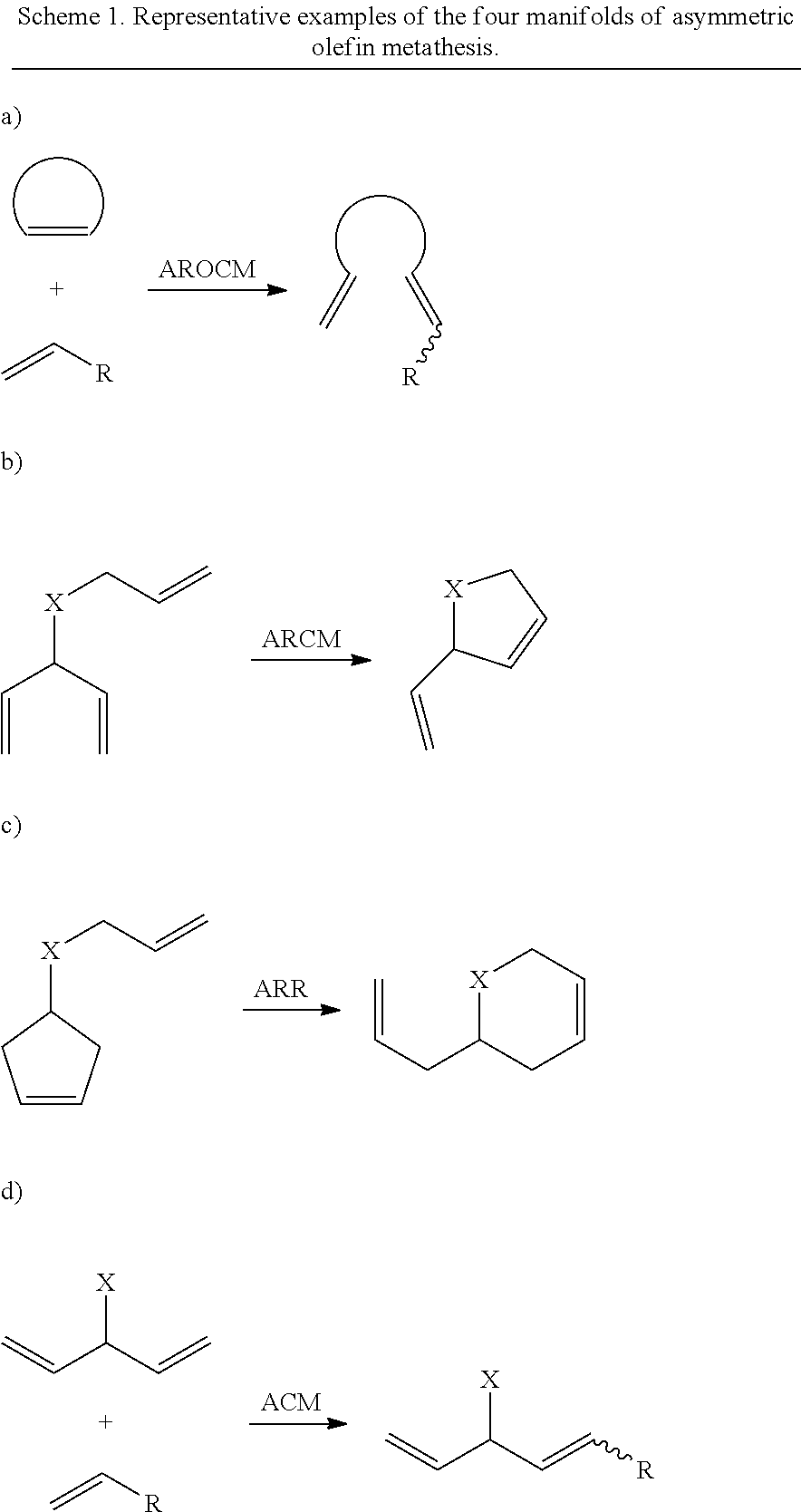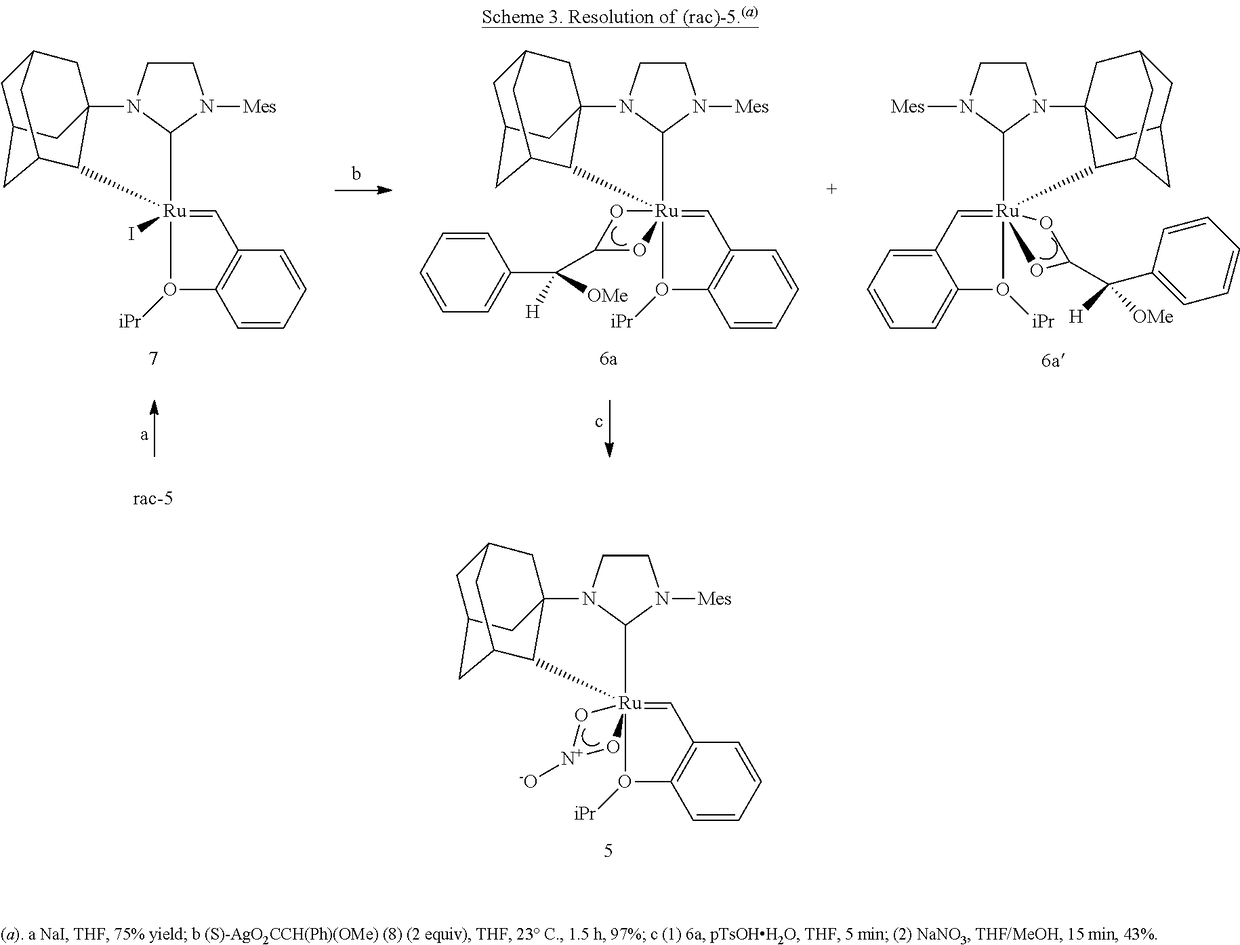Selective olefin metathesis with cyclometalated ruthenium complexes
a technology of cyclometalated ruthenium complexes and selective olefins, which is applied in the direction of organic compounds/hydrides/coordination complexes, organic compounds, physical/chemical process catalysts, etc., can solve the problems of difficult control of olefin geometry in arocm and acm while maintaining high enantioselectivity, and significant challenges remain
- Summary
- Abstract
- Description
- Claims
- Application Information
AI Technical Summary
Benefits of technology
Problems solved by technology
Method used
Image
Examples
Embodiment Construction
Terminology and Definitions
[0026]Unless otherwise indicated, the invention is not limited to specific reactants, substituents, catalysts, reaction conditions, or the like, as such may vary. It is also to be understood that the terminology used herein is for the purpose of describing particular embodiments only and is not to be interpreted as being limiting.
[0027]As used in the specification and the appended claims, the singular forms “a,”“an,” and “the” include plural referents unless the context clearly dictates otherwise. Thus, for example, reference to “an α-olefin” includes a single α-olefin as well as a combination or mixture of two or more α-olefins, reference to “a substituent” encompasses a single substituent as well as two or more substituents, and the like.
[0028]As used in the specification and the appended claims, the terms “for example,”“for instance,”“such as,” or “including” are meant to introduce examples that further clarify more general subject matter. Unless otherw...
PUM
| Property | Measurement | Unit |
|---|---|---|
| enantiomeric excess | aaaaa | aaaaa |
| temperature | aaaaa | aaaaa |
| chemical shifts | aaaaa | aaaaa |
Abstract
Description
Claims
Application Information
 Login to View More
Login to View More - R&D
- Intellectual Property
- Life Sciences
- Materials
- Tech Scout
- Unparalleled Data Quality
- Higher Quality Content
- 60% Fewer Hallucinations
Browse by: Latest US Patents, China's latest patents, Technical Efficacy Thesaurus, Application Domain, Technology Topic, Popular Technical Reports.
© 2025 PatSnap. All rights reserved.Legal|Privacy policy|Modern Slavery Act Transparency Statement|Sitemap|About US| Contact US: help@patsnap.com



